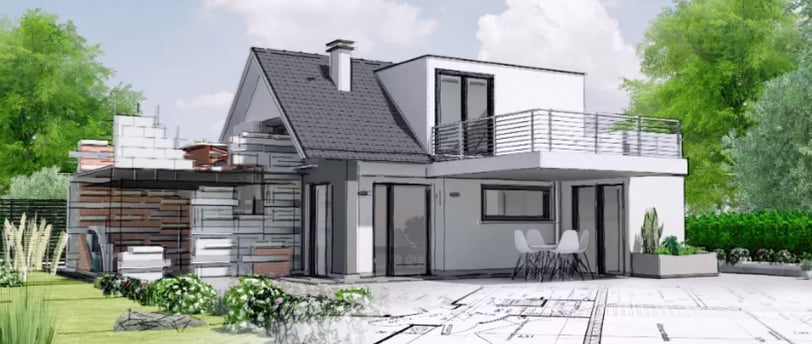Planning Permission Issues in Home Extensions UK | 2025 Guide
5/21/20253 min read


Planning Permission Issues in Home Extensions UK: What to Know in 2025
Thinking about adding space to your home? Whether you're planning a rear extension, double-storey extension, or a side return, understanding the UK planning permission process is essential. While many home extensions can be built under Permitted Development Rights, several challenges still arise that could delay or block your project.
In this post, we cover the most common planning permission issues in home extensions in the UK, how to avoid them, and tips to ensure your application is successful in 2025.
📌 What Is Planning Permission?
Planning permission is formal approval from your local authority that allows you to carry out building work. It's needed when the proposed home extension:
Doesn’t comply with Permitted Development (PD) limits
Is located in a conservation area, AONB, or listed building
Affects the structure or appearance of your home significantly
✅ When Planning Permission Is Not Required
Thanks to Permitted Development Rights, many homeowners can avoid full planning applications if their extension follows these general guidelines:
Single-Storey Extensions:
Maximum depth:
3 metres for terraced/semi-detached
4 metres for detached homes
Height not exceeding 4 metres
Built with similar materials as the existing home
Must not cover more than 50% of the original garden
Double-Storey Extensions:
Maximum depth: 3 metres
Roof must not exceed existing height
Side-facing windows must be obscure glazed and non-opening below 1.7m
🏡 Note: Even under PD, you may still need building regulations approval and party wall agreements.
Common Planning Permission Issues in Home Extensions
Despite the flexibility of PD rights, many homeowners in the UK face roadblocks during the extension process. Here are the most frequent challenges:
1. ❌ Neighbour Objections
Neighbors can raise objections to your extension if it affects their:
Light (right to light)
Privacy (overlooking gardens or windows)
View (particularly in rear or upper-floor extensions)
🔍 Tip: Submit a prior approval under the Neighbor Consultation Scheme for larger PD extensions and talk to neighbors early.
2. ❌ Overdevelopment of the Plot
If your extension takes up too much of your garden or drastically alters the footprint of the home, planning may be denied for being out of proportion.
3. ❌ Not in Keeping with Local Character
Your design may be refused if it doesn’t align with the local authority’s design code or impacts the street scene negatively.
Example: A modern extension on a row of historic brick terraces in a conservation area may be rejected unless sensitively designed.
4. ❌ Issues in Conservation Areas or Listed Buildings
If your property is
In a Conservation Area
A Listed Building
Located in an Area of Outstanding Natural Beauty (AONB)
...you’ll need full planning permission and often a heritage impact assessment. Restrictions are much tighter, and even small changes can require detailed justification.
5. ❌ Violation of Building Lines or Boundary Issues
Extending beyond established building lines or too close to boundaries without proper clearance may result in refusal.
🧱 Always consult the Party Wall Act 1996 if shared walls are involved.
6. ❌Poor Quality or Incomplete Application
Missing documents, unclear drawings, or not following the planning portal guidelines are leading reasons for rejection or delays.
Essential documents include
Site location and block plans
Floorplans and elevations (existing & proposed)
Design & Access Statement
Heritage Statement (if needed)
How to Improve Your Chances of Approval
✅ Hire an experienced architect or planning consultant
✅ Engage your neighbours early to reduce objections
✅ Use pre-application advice from your local planning authority
✅ Check all local development plans and design guidelines
✅ Consider alternative materials/design tweaks for sensitive areas
✅ Ensure accuracy in drawings and paperwork
✅ Be open to revisions if feedback is given by the council
How Long Does Planning Permission Take?
Pre-application advice 2–4 weeks
Planning application 8 weeks (standard)
Larger or complex developments Up to 13 weeks
Appeals (if rejected): 12–24 weeks or more
🗓️ In total, allow 3–6 months for the planning phase if approval is needed.
Types of Home Extensions Most Likely to Trigger Permission Issues
Double-storey rear extensions near boundaries
Side extensions near footpaths or roads
Flat roof extensions in pitched-roof streets
Extensions on sloped land or raised decks
Extensions in conservation areas or historic villages
Planning Permission & Home Extension Costs
Applying for planning permission includes:
£258 (England – Householder Application)
Architect/planning consultant fees: £1,500–£3,000
Drawings & plans: £500–£1,500
Heritage or environmental reports (if needed): £500–£2,000
Real-Life Case: Planning Denied in London Suburb
A homeowner in a South London suburb applied for a 5-meter rear extension. It was refused due to:
Proximity to the neighbour’s rear-facing window
Excessive overshadowing
Breach of 45-degree light rule
✅ Revised drawings reduced depth to 3.5 meters with a sloped roof, and permission was granted.
FAQs About Planning Permission for Extensions
Do I always need permission for a home extension in the UK?
Not always. Many single-storey and small rear extensions fall under Permitted Development. But larger or double-storey extensions usually require full permission.
What if my application is refused?
You can appeal the decision or submit revised plans that address the council’s concerns.
Can I apply myself?
Yes, but most people use an architect or planning consultant to reduce errors and delays.
Final Thoughts
Planning permission is one of the biggest hurdles in any home extension project. While it might seem like red tape, understanding the rules—and working with experts—can make the process much smoother.
Whether you're extending for a new kitchen, home office, or extra bedroom, staying ahead of planning challenges in 2025 ensures your dream space becomes a reality—legally and beautifully.